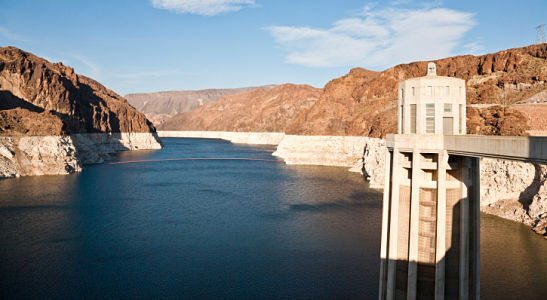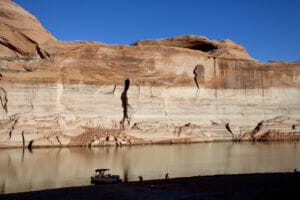If the 2012 runoff season seemed a lot like the previous year, it’s because it was. In fact, thanks to a rare second consecutive La Niña winter, the January-through-May 2012 period provided very similar runoff season totals.
This year’s snowmelt runoff from the Salt and Verde watershed amounted to only about 193,474 acre-feet, which puts the 2012 runoff season as the 16th driest among 114-year-old records kept by Salt River Project water managers. The runoff from 2011 was 223,916 acre-feet, the 22nd driest on record, and less than half of the 30-year median runoff of 534,336 acre-feet.
Typical of La Niña winters, the storm track is located over the Pacific Northwest with dry, calm conditions over the Southwestern US. The winter of 2012 followed this pattern with the Salt and Verde watershed receiving only 4.75 inches of precipitation between December and March — 62 percent of normal. Even drier was the January-though-March stretch, which was the 11th driest on record.
The good news is that even after back-to-back dry winters, the reservoirs on the Salt and Verde rivers today stand at about 61 percent full with 1.4 million acre-feet stored entering the heaviest-use period of the year. At this time in 2011, the reservoirs were 83 percent full thanks to a 2010 runoff season that was the 20th most productive ever.
Charlie Ester, SRP’s manager of Water Resource Operations, said SRP shareholders can count on full water allocations this year despite the second consecutive dry winter. The likelihood of a normal 2013 runoff season, maybe even one boosted by the hint of the potential for an El Niño condition forming in the Pacific Ocean, would be most appreciated, he said.
“As the final numbers show, 2012 and 2011 were very similar in that runoff was almost non-existent for days at a time,” said Ester. “The only real difference between the two years was that we had more runoff on the Salt than the Verde this year. We received very little runoff from the snowpack this year, simply because most of it came in December and then over a two-day period in later March.”
With all of Arizona — including the Salt and Verde watershed that supplies the greater Phoenix metropolitan area with the majority of its water — in some type of drought condition, Ester said the Salt and Verde reservoirs are still in good shape and are doing exactly what they were designed for: capturing runoff in wet years such as 2010 and storing it for the dry years such as 2011 and 2012.
SRP continues to emphasize the importance of water conservation, Ester said, and he encouraged Valley residents to watch SRP’s Together We Conserve website at www.TogetherWeConserve.com for updates and for easy way to conserve water.
SRP is the largest raw water supplier in the Phoenix metropolitan area, normally delivering more than 1 million acre-feet annually.




